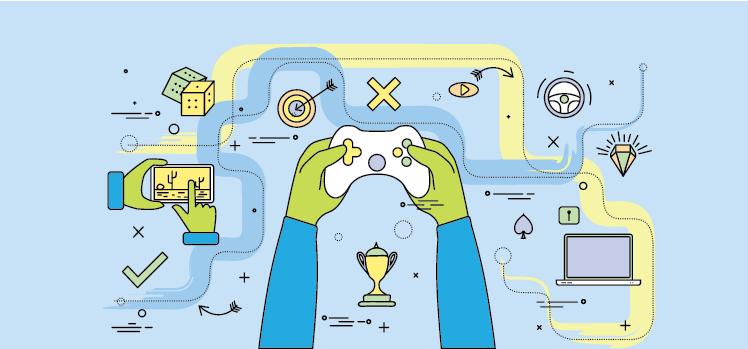How Collaboration Increases the Effectiveness of Gamification
The world is becoming more competitive with each passing day. The challenge for companies is not just acquiring talent, but retaining good people. So to make employees feel better in the work environment, employee engagement has become a critical factor for success. As 70 percent of the US workforce feel that they are disengaged from work owing to myriad reasons, businesses are hard-pressed to create strategies that reduce stress and pressure.
There are efforts to gamify the process by creating a game-like ambience to make work more fun and relaxing, rather than stressful. To take the gamification efforts to next level, every employee has to contribute to create a collaborative environment. Gamification can ramp up your conversions by seven times.
Major corporations are trying gamification to measure the employee’s performance and productivity in the core areas. Even small companies can join this bandwagon and can gain leverage by fixing the issues in their workflows to encourage employees to be more productive and collaborative. A Gallup Poll disclosed that employees who lose their interest and willingness to be passionate in their jobs cost their companies nearly $370 billion in the USA.
Gartner reveals that businesses successful in engaging users through gamification have seen 250 percent higher growth than their peers. One of the major criteria for companies to venture into this sales tactic is by establishing a place where achievements take the foreground. At times, monetary rewards may not be enticing the employees, but achieving and learning about new things can keep them motivated. A gamified environment also improves working relationships across the company.
Here are ways collaboration can increase the effectiveness of gamification.
Customers Provide Customer Satisfaction
As customer satisfaction is the key metric for any business, it is important to invest heavily on this front. A smart move would be to engage in a collaborative approach where not only the employees, but also the customers, respond to queries. They can be incentivized accordingly. This community approach will help the teams to resolve the concerns quickly and effectively.
For example, T-Mobile has a T-Community portal that’s a collaboration tool that enables both employees and customers to respond to tickets. When the company added a gamified approach with set targets to its stakeholders, in-store community and online users, the employee participation and performance rose by 90 percent and the customer satisfaction by 30 percent.
Change in the Organization
In an organization, employees often try to stay within in their comfort zones. They stick to their ways, and bringing a change in their modus operandi can be an arduous task for the employer. A gamified environment can fill in the gaps and institute the change into the organizational ecosystem.
Something similar happened at Yahoo, when they wanted to give the utmost priority to customer satisfaction. This eventually gave rise to a policy that made a dent in the traditional structure. Gamification made this process simpler with few changes by adding more points for achieving customer satisfaction. If you need to see your company advance, then shift your focus to customer satisfaction. This is a win-win situation for both the company and employees. At Yahoo, they were satisfied with the scores, and the company also achieved a larger goal.
Mind the Gap, Bridge the Divide
As the world is turning digital, many old approaches are becoming obsolete. This imminent change may give great results, but it limits the ways used by the experienced employees who still function best in their standard practices. Right here, a gamification platform can bridge the gap between generations.
To illustrate, Allstate had a problem of getting into the risks of online identity thefts. So it wanted to share information with its employees, as well as urge them to keep focused on the issue. Rather than taking the route of a routine training approach, Allstate launched an online course with a villain and a superhero who saves the world against the former’s threats. This was designed to drive home the point of privacy and online security risks. With this smart move of gamification, many employees felt excited and challenged in the learning environment.
Culture Makes its Mark
Gamification offers a lot of promise for an organization looking to engage its employees and help them achieve satisfaction from their jobs. Improved productivity and performance are difficult without happy and interested employees.
The vital thing in devising an enterprise gamification solution is to realize the fact that one-size-fits-all does not apply here. An enterprise gamification app needs to be carefully aligned with the work environment and overall work ethic of an organization, while keeping targeted employees in mind. It should be interesting to employees and relevant to their jobs. Recent success stories in gamification are increasingly focused on data-driven motivators.

No Comments